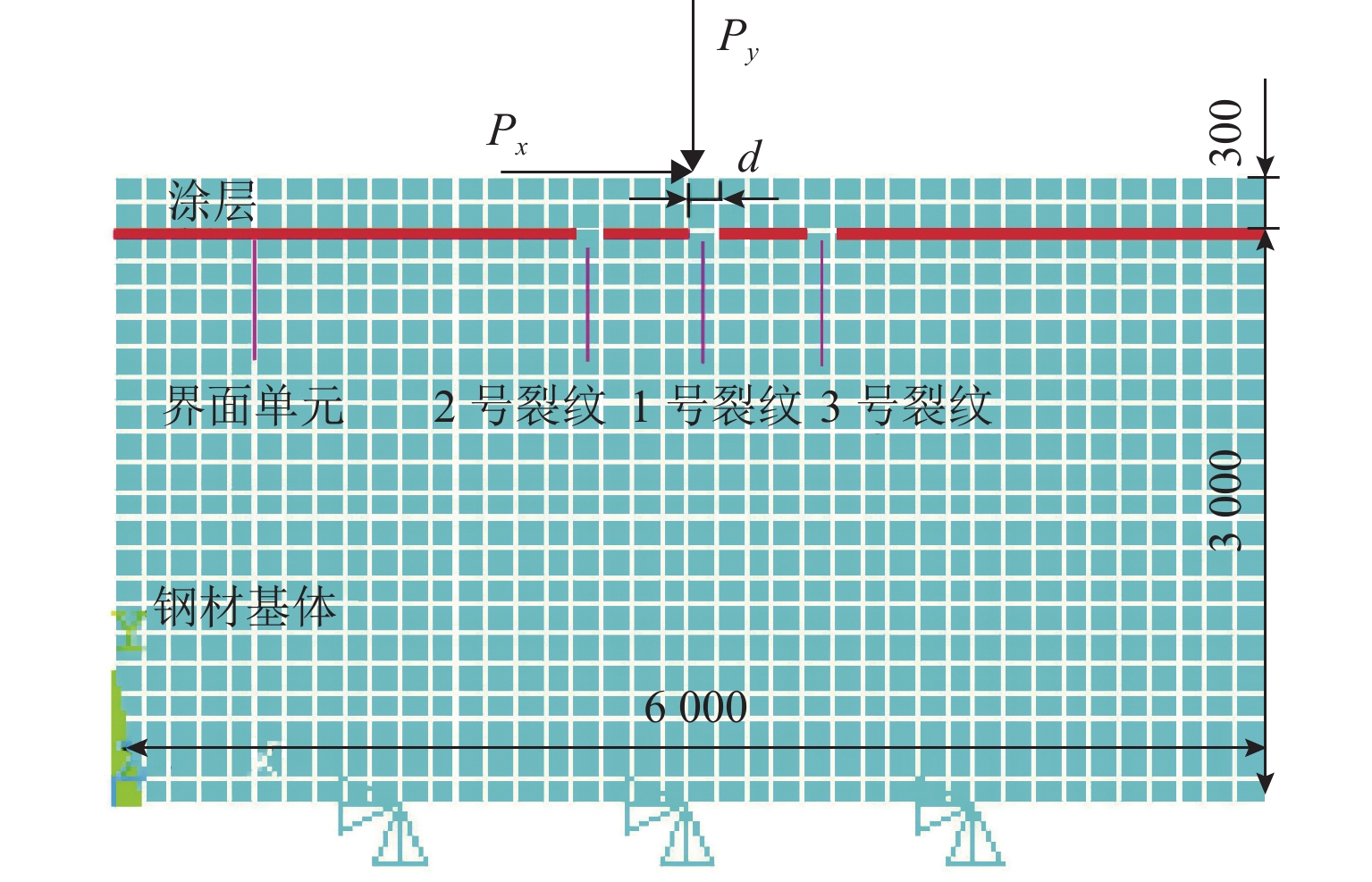Interfacial Stress and Failure Criteria of Steel Structure Coatings Under Wind-Sand Erosion
-
摘要:
为表征和评价风沙冲蚀作用下钢结构涂层界面结合强度,以西北地区风沙流特征为背景,利用接触力学和界面力学理论建立了在风沙冲蚀作用下钢结构涂层的界面应力表达式. 结合断裂力学理论和有限元分析方法,确定了钢结构涂层的界面起裂位置. 在起裂位置处建立了考虑压应力影响的界面应力破坏准则.研究结果表明:当冲蚀角度为30° 和60° 时,最大界面剪应力分别位于冲蚀点前侧200 mm和180 mm处,最大界面压应力分别位于冲蚀点前侧100 mm和50 mm处,涂层界面的起裂位置为最大界面剪应力处. 风沙冲蚀作用下涂层的界面应力破坏准则与莫尔-库伦强度准则相似,斜率的大小取决于沙粒的冲蚀角度,且当冲蚀角度为30° 和60° 时,斜率大小分别为 −0.599和 −0.467.
Abstract:In order to characterize and assess the interfacial bonding strength of steel structure coatings under wind-sand erosion, expressions for calculating interfacial stresses of the steel structure coating under wind-sand erosion are established using theories of contact mechanics and interface mechanics, based on the typical sandstorm background of Northwest China. The interface crack initiation position of steel structure coating is determined by combined use of the fracture mechanics theory and finite element analysis method. The interfacial stress failure criterion considering the influence of compressive stress is established at the crack position. The results show that when the erosion angle is 30° and 60°, the maximum interfacial shear stress is located at 200 mm and 180 mm in front of the erosion point, and the maximum interfacial compressive stress is located at 100 mm and 50 mm in front of the erosion point, respectively. The interface crack in the coating initiates at the position of the maximum interfacial shear stress. In addition, the proposed interfacial stress failure criterion for coatings under wind-sand erosion is similar to the Mohr-Coulomb strength criterion. The slope depends on the erosion angle of the sand particles. When the erosion angle is 30° and 60°, the slope magnitude is −0.599 and −0.467, respectively.
-
Key words:
- steel structure /
- coating /
- failure criterion /
- interface stress /
- wind and sand
-
在“一带一路”和“十四五规划”等国家政策的大力指导下,西北地区修建了大量的钢结构桥梁、输电铁塔等. 而西北地区风沙的冲蚀、磨损等物理腐蚀,对这些钢结构设施涂装层的耐久性提出了严峻的考验. 钢结构涂层与基体的界面结合强度是涂层能否长期且高性能服役的关键制约因素之一[1],因此,表征和评价钢结构涂层与基体的界面结合强度,建立界面破坏准则成为该领域的研究热点之一.
国内外学者已对涂层与基体的界面结合强度问题展开了大量研究. Benjamin等[2]首先采用划痕法来测量界面结合强度,并给出了计算界面剪切强度的表达式,然而,这一公式是基于完全塑性理论推导出来的,应用具有局限性[3]. Ollendorf等[4]把划痕法与声发射(AE)技术相结合,利用界面发生破坏时AE信号所对应的临界荷载值作为界面结合强度的评价参数. Steinmann等[5]认为临界荷载值虽然能在一定程度上反应界面的结合性能,但临界荷载是力的概念,并不能用于表征界面结合强度. 并且划痕法中的临界荷载不仅与涂层的材料、厚度、硬度等内在因素有关,而且还与压头的形状、尺寸等外在因素有关[6],因此不同实验所得到的临界荷载缺乏可比性. 针对以上问题,Beydon等[7]提出的3点弯曲法和Guo等[8]提出的剪切法均采用界面剪应力来统一表征界面结合强度. 文献[9]中提到的垂直拉伸法能够较准确且定量化地测量出涂层层间以及界面的拉应力,并且采用界面拉应力来表征涂层与基体的界面结合强度. 在前人研究的基础上,许金泉[10]认为可以采用垂直于界面的正应力和作用于界面的剪应力共同来表征界面结合强度. 在界面破坏准则方面,卓杨等[11]基于Morse对势的分子动力学模拟结果,建立了涂层与基体宏观的界面椭圆破坏准则,并指出破坏条件为界面原子对的分离. 于秦等[12]在基体中预设一条缺口以引起应力集中来确定界面发生破坏的位置,然后,当界面承受一定拉应力时利用四点弯曲试验建立了界面应力破坏准则.
综上所述,国内外学者对涂层与基体的界面结合强度研究较多,并取得了一定成果,但对于在风沙冲蚀条件下,当钢结构涂层同时承受压应力和剪应力作用时关于涂层与基体界面应力破坏准则的研究还相对较少. 本文首先利用钢结构涂层的界面应力计算方法研究了最大界面剪应力位置. 然后基于断裂力学理论,通过有限元分析方法确定了界面起裂位置. 最后在起裂位置处建立了考虑压应力影响的界面应力破坏准则. 所得到的结论可以概括不同风沙冲蚀工况下钢结构涂层界面结合强度的破坏条件,对涂层界面结合强度的表征和评价、涂层的耐久性研究具有重要意义.
1. 界面应力分析
1.1 界面应力分析方法
基于接触分析理论,在不考虑摩擦的情况下风沙粒子冲蚀钢结构涂层问题可简化为准静态碰撞模型[13]. 将最大接触力分解为切向接触力Px和法向接触力Py,建立钢结构涂层(初始厚度为h0)与基体的平面受力模型,如图1所示. 图中:V为冲蚀速度;θ为冲蚀角度. 根据文献[13],沙粒与钢结构涂层接触面的最大接触力可表示为
{Px=(12536m3rE2∗V6)15cosθ(sinθ)15,Py=−(12536m3rE2∗V6)15(sinθ)65, (1) 式中:m为沙粒质量;r为沙粒直径;E*为等效弹性模量,满足关系
1E∗=1−V2E+1−V21E1 ,E和v分别为沙粒的弹性模量和泊松比,E1和v1分别为涂层的弹性模量和泊松比.利用涂层材料与钢材基体界面应力的镜像点法,形成如图2所示一系列镜像点Ak和Bk. 基于Goursat应力函数和Dirichlet等值性原理,假设钢结构表面无初始缺陷,涂层与基体理想结合,推导出风沙冲蚀条件下钢结构涂层与基体界面应力计算公式[14]为
σx=1−α2π (1+β)Py,max2h3−Px,max(x3+3xh2)(x2+h2)2− (1−α)βπ (1−β2)Px,max2xh2+Py,maxh(x2−h2)(x2+h2)2+ 1−α2π (1−β)Px,max(x3−xh2)+Py,max2h3(x2+h2)2, (2) τxy=1−α2π (1+β)Px,max2x2h+Py,max(x3−xh2)(x2+h2)2− (1−α)βπ (1−β2)Py,max2xh2−Px,maxh(x2−h2)(x2+h2)2+ 1−α2π (1−β)Px,max2x2h−Py,max(x3+3xh2)(x2+h2)2, (3) {α=μ1(κ2+1)−μ2(κ1+1)μ1(κ2+1)+μ2(κ1+1),β=μ1(κ2−1)−μ2(κ1−1)μ1(κ2+1)+μ2(κ1+1), (4) 式中:σx为界面压应力;τxy为界面剪应力;Px,max为最大切向接触力;Py,max为最大法向接触力;h为钢结构涂层厚度;μ1、μ2分别为涂层和钢材基体的剪切弹性模量;ν2为钢材基体的泊松比;对于平面应力问题,
κ1=3−v11+v1 ,κ2=3−v21+v2 .1.2 风沙特征及工况拟定
文献[15]中给出了沙尘暴强度等级及其对应的风力等级、瞬时极大风速和最小能见度,见表1.
表 1 西北地区沙尘暴强度划分等级Table 1. Classification of sandstorm intensity in Northwest China强度等级 风力
等级瞬时极大风速vmax/(m·s−1) 最小能见度
smin/m特强 ≥ 10 ≥ 25 < 50 强 ≥ 8 ≥ 20 [50, 200) 中 6~8 ≥ 17 [200, 500) 弱 4~6 ≥ 10 [500, 1000) 以某波形腹板钢-混组合桥梁工程[16]为例,波形钢腹板涂层采用丙烯酸脂肪族聚氨酯涂层,h0 = 300 μm,弹性模量为E1,泊松比为ν1;钢材基体的弹性模量为E2,泊松比为ν2;沙粒的弹性模量为E,泊松比为ν,密度ρ = 2.650 g/cm3. 沙粒、丙烯酸脂肪族聚氨酯涂层和钢材基体的弹性模量和泊松比取值见表2.
表 2 各材料的力学参数Table 2. Mechanical parameters of materials名称 弹性模量/GPa 泊松比 沙粒 40.00 0.25 涂层 0.77 0.40 钢材基体 206.00 0.30 根据表1的沙尘暴分类标准,徐启运等[15]搜集整理了42年间西北地区的气象资料,统计结果显示,区域性强沙尘暴天气占总沙尘暴天气的76.9%,沙粒的V可取为20 m/s. 桥梁上部结构一般在距地面3 m以上高度处,主要受到悬浮的风沙粒子对其的冲蚀破坏作用,沙粒直径r可取为0.100 mm和0.075 mm. 依据波形钢腹板的构造特征,沙粒的θ可取为 30° 和 60°. 综上所述,拟定以下4种风沙冲蚀工况,具体参数见表3.
表 3 沙粒冲蚀工况Table 3. Sand erosion cases工况 V/(m·s−1) θ/(°) r/mm 1 20 30 0.075 2 20 30 0.100 3 20 60 0.075 4 20 60 0.100 1.3 界面应力特征
将表3中沙粒冲蚀工况分别代入式(1)~(3)中,计算出具有初始厚度h0的涂层在不同位置处的界面压应力和界面剪应力,如图3所示.
由图3可知:上述4种冲蚀工况下,在冲击点前侧界面剪应力和界面压应力均呈现先增大后减小的变化规律,且在200 μm和100 μm(工况1、2)、180 μm和50 μm(工况3、4)处达到最大值,主要是由于沙粒的冲击角度所致,冲击角度越大,界面应力的最值越靠近冲击点;在冲击点后侧界面剪应力呈现先减小后增大然后再逐渐减小的变化规律,且在 −50 μm(工况1、2)和 −150 μm(工况3、4)处达到极小值,在 −350 μm(工况1、2)和 −550 μm(工况3、4)处达到极大值,主要是由于在冲击作用下涂层变形引起黏结力的方向发生变化所造成的;在冲击点后侧界面压应力在第1、2种冲蚀工况下呈现先减小后反向增大然后再保持拉应力状态逐渐减小的变化规律,且在 −350 μm处达到极大拉应力值,主要是因为沙粒冲击作用下涂层在该区域内受拉所导致的;界面压应力在第3、4种冲蚀工况下保持压应力状态,呈现逐渐减小的变化规律.
2. 界面起裂位置确定
2.1 有限元模型建立与验证
为了准确分析风沙冲蚀作用下钢结构涂层界面起裂位置,利用ANSYS有限元分析软件,建立钢结构涂层与钢材基体的二维平面分析模型. 采用2D实体结构单元PLANE182来模拟钢结构涂层和钢材基体,单元参数按表2分别取值;采用COHESIVE单元INTER202来模拟钢结构涂层与钢材基体的界面. INTER202单元的本构关系采用双线性内聚力准则,其张力-位移关系如图4所示,图中:T和δ分别为相应方向(法向n、切向t)的张力和位移,T0(Tn,0、Tt,0)为内聚力强度;
δ∗ (δn∗ 、δt∗ )为初始损伤时的位移,δc (δnc 、δtc )为最终失效时的位移. 根据文献[17],本文中,Tn,0和Tt,0分别取为60 MPa和40 MPa,δn∗ 和δt∗ 分别取为4.17 × 10−3 mm和4.29 × 10−2 mm,内聚能ϕ 取为150 J·m−2. 边界条件为底边固结,加载方式为节点荷载,采用四边形单元进行网格划分,网格尺寸取h0/2.为验证有限元模型的正确性和精度,以工况2为例对具有初始厚度h0的钢结构涂层进行分析,并与1.3节中的理论计算结果进行对比,如表4和图5所示. 其中:τmax、σmax为最大剪应力和最大压应力.
表 4 工况2下界面应力的理论解与数值解对比Table 4. Comparison of theoretical and numerical solutions of interfacial stress in case 2类型 τmax/Pa σmax/Pa 理论解 93.170 −174.605 数值解 93.565 −163.360 相对误差/% 0.42 6.44 由表4和图5可知:有限元分析方法计算出的τmax和σmax与理论解的相对误差较小,且其他各位置的界面应力值均与理论解吻合良好,证明此有限元模型能较准确模拟风沙冲蚀钢结构涂层时的界面应力问题.
2.2 界面起裂位置确定
将4种冲蚀工况下的最大界面剪应力位置统称为d,假设d为界面起裂位置. 在有限元模型中的位置d处引入1号裂纹,在位置d的左右两边任意位置处分别引入2号和3号裂纹,如图6所示. 最后利用有限元分析软件分别得到4种冲蚀工况下每个裂纹尖端的Ⅱ型应力强度因子,见表5.
表 5 裂纹尖端Ⅱ型应力强度因子Table 5. Type Ⅱ stress intensity factor at the crack tip工况 2 号裂纹 1 号裂纹 3 号裂纹 1 0.321 0.646 0.545 2 0.338 0.680 0.574 3 0.186 0.552 0.440 4 0.202 0.593 0.473 由表5可知:在任何一种冲蚀工况下1号裂纹尖端的Ⅱ型应力强度因子均大于2号和3号裂纹尖端的. 裂纹尖端的应力强度因子越大,裂纹尖端的应力场就越强,应力奇异性就越严重[18]. 由于裂纹尖端的应力强度因子准则与能量释放率准则等价[19],所以可以得出1号裂纹的能量释放率较大. 因而可以从能量角度来证明在风沙冲蚀作用下涂层的界面起裂发生在最大界面剪应力位置处,这与文献[20]中用划痕法试验得到的结论吻合.
3. 界面应力破坏准则
3.1 界面应力随涂层厚度累计损失量的变化规律
涂层在长期遭受风沙侵蚀时会发生一定程度的冲蚀磨损,导致涂层厚度逐渐变薄,涂层厚度累积损失量为
Δh=h0−h. (5) 为了探究钢结构涂层在起裂位置处的界面应力与
Δh 之间的变化规律,将表3中的4种冲蚀工况分别代入式(1)、(2)、(3)、(5)中计算出不同厚度损失量Δh 下起裂位置处的τmax及其对应的σmax,对界面应力点进行多项式拟合,如图7所示.由于4种冲蚀工况下τmax和σmax的拟合表达式均具有相似性,因此以工况1为例给出拟合表达式为
τmax(σmax)=B1Δh6+B2Δh5+B3Δh4+ B4Δh3+B5Δh2+B6Δh+d, (6) 式中:各系数见表6.
表 6 工况1下界面应力点的拟合表达式参数Table 6. Fitting expression parameters of interfacial stress point in case 1变量 B1/(× 10−11) B2/(× 10−8) B3/(× 10−6) B4/(× 10−4) B5/(× 10−2) B6/(× 10−2) d R2 τmax 1.794 −1.061 2.452 −2.578 1.400 7.800 92.754 0.999 σmax −7.562 4.943 −12.310 10.000 −7.400 90.300 −150.778 0.997 由图7和表6可知:起裂位置处的τmax及其对应的σmax均随
Δh 的增大而逐渐增大,并且符合一元六次多项式的变化特征. 这是由于沙粒在同一位置处持续冲蚀钢结构涂层时,涂层厚度逐渐减小,在界面附近的变形量逐渐增大,所以界面应力会逐渐增大. 由图7(a)可知:沙粒粒径越大起裂位置处的τmax越大;在沙粒粒径相等的条件下,冲蚀角度越小起裂位置处的τmax越大. 由图7(b)可知:冲蚀角度越大起裂位置处的σmax越大;在冲蚀角度相等的条件下,沙粒粒径越大起裂位置处的σmax越大. 这是由于在沙粒粒径相等的条件下,冲蚀角度越小,水平分力越大,切削作用越明显,剪应力就越大;冲蚀角度越大,竖直分力越大,压缩作用越明显,界面压应力就越大;在冲蚀角度相等的条件下,沙粒粒径越大,对涂层的凿削作用越强,界面应力就越大.3.2 界面压应力对界面剪应力的影响
为探究钢结构涂层在起裂位置处的界面压应力对界面剪应力的影响,以表3中的工况1为例求出风沙粒子冲蚀涂层时的最大接触力,然后计算出不同
Δh 下起裂位置处的τmax及其对应的界面压应力(|σmax|),见表7.表 7 不同界面剪应力所对应的界面压应力Table 7. Interfacial compressive stresses corresponding to different interfacial shear stressesΔh/μm τmax/MPa |στmax|/MPa 0 92 147 50 184 294 200 276 429 220 344 571 240 461 736 250 549 930 由表7可知:在工况1下,相比于
Δh =0,Δh =50,200,220,240,250 μm时的|σmax|分别增大200%、291.6%、387.6%、500%、631.8%. 因此,对于同一种涂层、同一种冲蚀工况,在不同Δh 下起裂位置处的界面剪应力所对应的界面压应力值并非常数.3.3 界面应力破坏准则
由3.2节可知,不同
Δh 下起裂位置处τmax所对应的σmax并非常数. 所以在建立风沙冲蚀钢结构涂层的界面应力破坏准则时,必须考虑界面压应力的影响来建立具有一般性的界面应力破坏准则.首先,求出4种工况下沙粒冲蚀钢结构涂层时的最大接触力,然后计算出不同
Δh 下起裂位置处的τmax及σmax,如图8所示. 对界面应力点进行线性拟合,得到4种工况下的界面应力破坏准则表达式,见表8.表 8 各工况下界面应力破坏准则表达式Table 8. Expressions of interfacial stress failure criterion in various cases冲蚀工况 破坏准则表达式 决定系数 R2 1 τmax=10.050−0.599σmax 0.995 2 τmax=10.645−0.599σmax 0.996 3 τmax=−2.049−0.467σmax 0.994 4 τmax=−2.299−0.467σmax 0.994 由图8可知:在4种风沙冲蚀工况下,当钢结构涂层在起裂位置处的σmax增大时,与之对应的τmax也随之增大;在工况1和2、工况3和4下界面应力破坏准则表达式的斜率分别相等.
由于在风沙冲蚀作用下,钢结构涂层与基体的界面剪应力既有可能为正也有可能为负,但其正负仅仅表示界面剪应力的方向,因此可以将风沙冲蚀作用下钢结构涂层的界面应力破坏准则进一步写成
|τmax|=τc−kσmax, (7) 式中:
τc、k 均为表征界面强度特征的常数.由式(7)可知,风沙冲蚀条件下钢结构涂层的界面破坏准则与莫尔—库仑强度准则[21]
|τ|=c−σtanϕ 在形式上相似.4. 结 论
本文通过对风沙冲蚀条件下钢结构涂层起裂位置处的界面应力进行分析,得出了以下主要结论:
1) 风沙冲蚀作用下钢结构涂层的界面起裂位置为最大界面剪应力位置.
2) 起裂位置处的界面应力值与涂层厚度累积损失量之间呈一元六次多项式的变化特征.
3) 对于同一种冲蚀工况,在不同厚度累积损失量下起裂位置处的界面剪应力所对应的界面压应力并非常数.
4) 提出了在风沙冲蚀作用下考虑压应力影响的钢结构涂层界面应力破坏准则,其形式与莫尔-库仑强度准则相似.
5) 风沙冲蚀作用下钢结构涂层界面应力破坏准则的斜率大小取决于沙粒的冲蚀角度.
-
表 1 西北地区沙尘暴强度划分等级
Table 1. Classification of sandstorm intensity in Northwest China
强度等级 风力
等级瞬时极大风速vmax/(m·s−1) 最小能见度
smin/m特强 ≥ 10 ≥ 25 < 50 强 ≥ 8 ≥ 20 [50, 200) 中 6~8 ≥ 17 [200, 500) 弱 4~6 ≥ 10 [500, 1000) 表 2 各材料的力学参数
Table 2. Mechanical parameters of materials
名称 弹性模量/GPa 泊松比 沙粒 40.00 0.25 涂层 0.77 0.40 钢材基体 206.00 0.30 表 3 沙粒冲蚀工况
Table 3. Sand erosion cases
工况 V/(m·s−1) θ/(°) r/mm 1 20 30 0.075 2 20 30 0.100 3 20 60 0.075 4 20 60 0.100 表 4 工况2下界面应力的理论解与数值解对比
Table 4. Comparison of theoretical and numerical solutions of interfacial stress in case 2
类型 τmax/Pa σmax/Pa 理论解 93.170 −174.605 数值解 93.565 −163.360 相对误差/% 0.42 6.44 表 5 裂纹尖端Ⅱ型应力强度因子
Table 5. Type Ⅱ stress intensity factor at the crack tip
工况 2 号裂纹 1 号裂纹 3 号裂纹 1 0.321 0.646 0.545 2 0.338 0.680 0.574 3 0.186 0.552 0.440 4 0.202 0.593 0.473 表 6 工况1下界面应力点的拟合表达式参数
Table 6. Fitting expression parameters of interfacial stress point in case 1
变量 B1/(× 10−11) B2/(× 10−8) B3/(× 10−6) B4/(× 10−4) B5/(× 10−2) B6/(× 10−2) d R2 τmax 1.794 −1.061 2.452 −2.578 1.400 7.800 92.754 0.999 σmax −7.562 4.943 −12.310 10.000 −7.400 90.300 −150.778 0.997 表 7 不同界面剪应力所对应的界面压应力
Table 7. Interfacial compressive stresses corresponding to different interfacial shear stresses
Δh/μm τmax/MPa |στmax|/MPa 0 92 147 50 184 294 200 276 429 220 344 571 240 461 736 250 549 930 表 8 各工况下界面应力破坏准则表达式
Table 8. Expressions of interfacial stress failure criterion in various cases
冲蚀工况 破坏准则表达式 决定系数 R2 1 τmax=10.050−0.599σmax 0.995 2 τmax=10.645−0.599σmax 0.996 3 τmax=−2.049−0.467σmax 0.994 4 τmax=−2.299−0.467σmax 0.994 -
[1] 卞达,王永光,倪自丰,等. 涂层厚度对硬脆涂层结合强度的影响[J]. 计算力学学报,2016,33(1): 103-106.BIAN Da, WANG Yongguang, NI Zifeng, et al. Effect of the coating thickness on the bond strength for brittle coating substrate system[J]. Chinese Journal of Computational Mechanics, 2016, 33(1): 103-106. [2] BENJAMIN P, WEAVER C. Measurement of adhesion of thin films[J]. Proceedings of the Royal Society of London Series A, 1960, 254(1277): 163-176. [3] 杨班权,陈光南,张坤,等. 涂层/基体材料界面结合强度测量方法的现状与展望[J]. 力学进展,2007,37(1): 67-79. doi: 10.3321/j.issn:1000-0992.2007.01.010YANG Banquan, CHEN Guangnan, ZHANG Kun, et al. A review on measurement methods for interfacial bonding strength between coating and substrate[J]. Advances in Mechanics, 2007, 37(1): 67-79. doi: 10.3321/j.issn:1000-0992.2007.01.010 [4] OLLENDORF H, SCHNEIDER D. A comparative study of adhesion test methods for hard coatings[J]. Surface and Coatings Technology, 1999, 113(1/2): 86-102. [5] STEINMANN P A, TARDY Y, HINTERMANN H E. Adhesion testing by the scratch test method: the influence of intrinsic and extrinsic parameters on the critical load[J]. Thin Solid Films, 1987, 154(1/2): 333-349. [6] TANG W, XU K W, WANG P, et al. Scratch behavior of multi-layered metallic thin films on Al2O3 substrates[J]. Surface and Coatings Technology, 2004, 182(2/3): 143-148. [7] BEYDON R, BERNHART G, SEGUI Y. Measurement of metallic coatings adhesion to fibre reinforced plastic materials[J]. Surface and Coatings Technology, 2000, 126(1): 39-47. doi: 10.1016/S0257-8972(00)00516-8 [8] GUO S Q, MUMM D R, KARLSSON A M, et al. Measurement of interfacial shear mechanical properties in thermal barrier coating systems by a barb pullout method[J]. Scripta Materialia, 2005, 53(9): 1043-1048. doi: 10.1016/j.scriptamat.2005.07.012 [9] PERERA D Y. On adhesion and stress in organic coatings[J]. Progress in Organic Coatings, 1996, 28(1): 21-23. doi: 10.1016/0300-9440(95)00585-4 [10] 许金泉. 界面力学[M]. 北京: 科学出版社, 2006. [11] 卓杨,许金泉. 基于分子动力学模拟结果的界面破坏准则[J]. 工程力学,2008,25(2): 46-51.ZHUO Yang, XU Jinquan. An interface fracture criterion based on simulation of molecular dynamics[J]. Engineering Mechanics, 2008, 25(2): 46-51. [12] 于秦,许金泉. 薄膜涂层材料界面纯剪破坏标准试验法的开发[J]. 力学季刊,2005,26(4): 618-622. doi: 10.3969/j.issn.0254-0053.2005.04.017YU Qin, XU Jinquan. Development of pure shearing destructive standard test method for coating materials[J]. Chinese Quarterly of Mechanics, 2005, 26(4): 618-622. doi: 10.3969/j.issn.0254-0053.2005.04.017 [13] 郝贠洪,邢永明,杨诗婷,等. 风沙环境下钢结构涂层的冲蚀磨损力学性能研究[J]. 应用力学学报,2013,30(3): 350-355, 473. doi: 10.11776/cjam.30.03.B119HAO Yunhong, XING Yongming, YANG Shiting, et al. The erosion-wear mechanical properties of the coating of steel structure subject to sandstorm[J]. Chinese Journal of Applied Mechanics, 2013, 30(3): 350-355, 473. doi: 10.11776/cjam.30.03.B119 [14] 郝贠洪,朱敏侠,冯玉江,等. 风沙冲击作用下钢结构表面涂层与基体界面应力研究[J]. 固体力学学报,2014,35(5): 485-492. doi: 10.19636/j.cnki.cjsm42-1250/o3.2014.05.007HAO Yunhong, ZHU Minxia, FENG Yujiang. et al. Interface stress between steel surface coating and substrate under the sand shock[J]. Chinese Journal of Solid Mechanics, 2014, 35(5): 485-492. doi: 10.19636/j.cnki.cjsm42-1250/o3.2014.05.007 [15] 徐启运,胡敬松. 我国西北地区沙尘暴天气时空分布特征[J]. 应用气象学报,1996,7(4): 479-482.XU Qiyun, HU Jingsong. Featurures of spatial and temporal distributions of the dust storms in northwest China[J]. Quarterly Journal of Applied Meteorological, 1996, 7(4): 479-482. [16] 赵富康,蔺鹏臻,颜维毅,等. 钢箱-混凝土组合桥梁防腐涂层的疲劳应力分析[J]. 涂料工业,2020,50(10): 7-14. doi: 10.12020/j.issn.0253-4312.2020.10.7ZHAO Fukang, LIN Pengzhen, YAN Weiyi. et al. Fatigue stress analysis of anti-corrosion coatings on steel box-concrete composite beam bridge[J]. Paint & Coatings Industry, 2020, 50(10): 7-14. doi: 10.12020/j.issn.0253-4312.2020.10.7 [17] 胡振虎. 基于内聚力模型的复合材料胶接接头界面失效机理研究[D]. 杭州: 浙江大学, 2018. [18] 解德, 钱勤, 李长安. 断裂力学中的数值计算方法及工程应用[M]. 北京: 科学出版社, 2009. [19] 王自强, 陈少华. 高等断裂力学[M]. 北京: 科学出版社, 2009. [20] MUTOH Y, XU J Q MIYASHITA Y, et. al. On evalution of adhesive strength in scratch test of coating materials[J]. Transactions of the Japan Society of Mechanical Engineers, 2002, 68(6): 909-915. [21] 李广信. 高等土力学[M]. 2版. 北京: 清华大学出版社, 2016. 期刊类型引用(1)
1. 蔺鹏臻,陈星. 基于改进Sherwood-Frost模型的钢结构重防腐涂装本构研究. 铁道科学与工程学报. 2024(09): 3719-3731 .  百度学术
百度学术其他类型引用(5)
-






 下载:
下载:



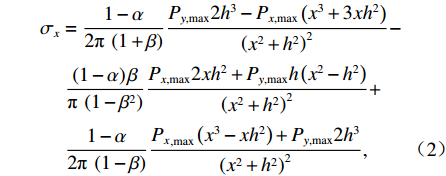
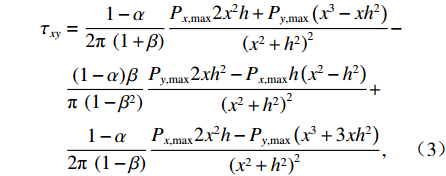
































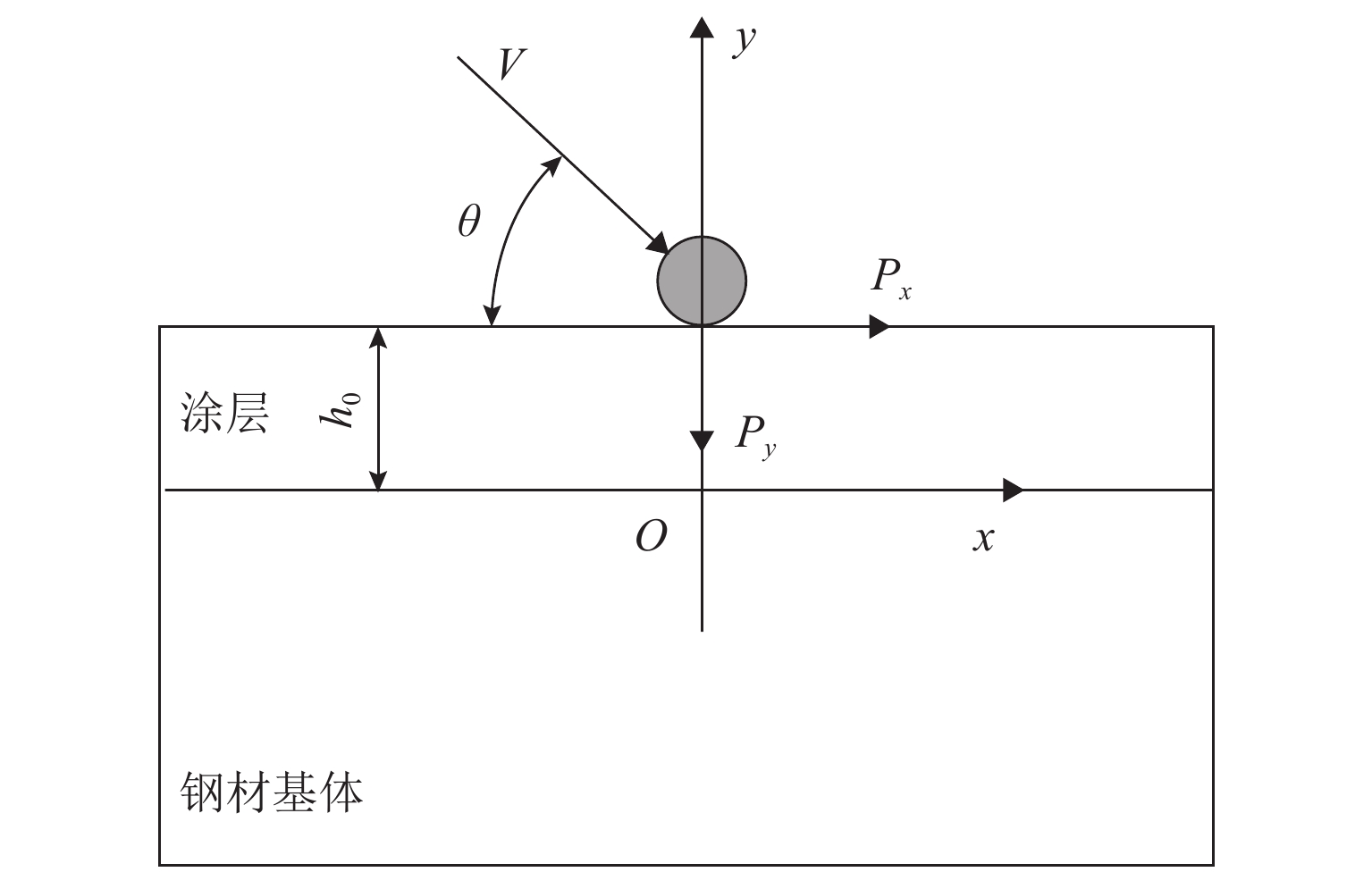
 下载:
下载:
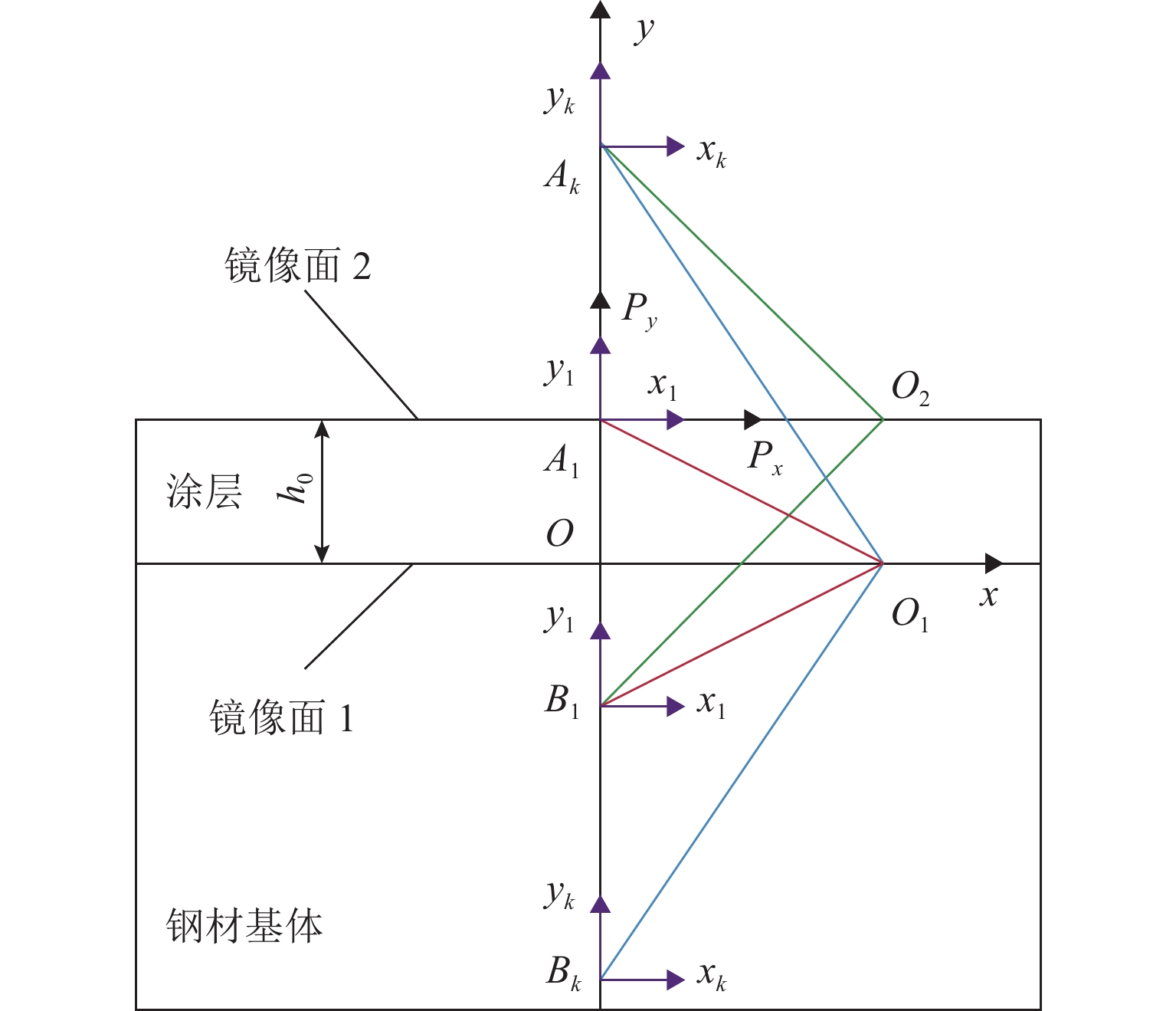
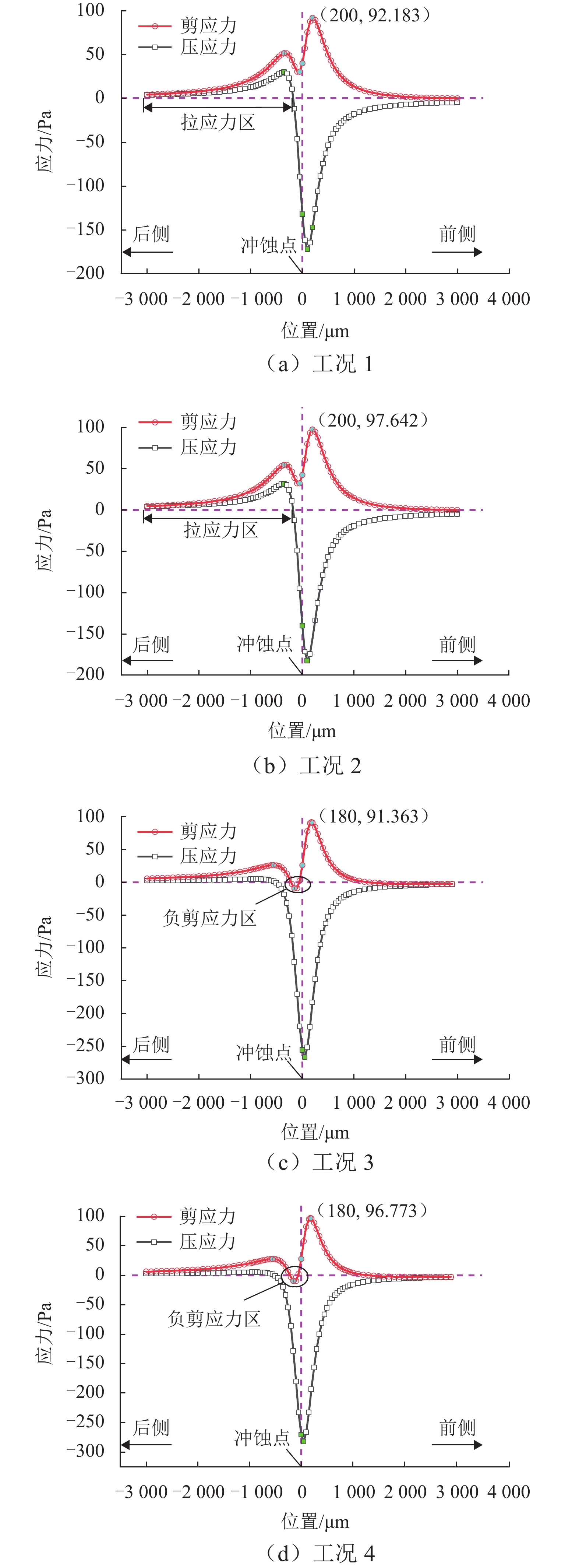
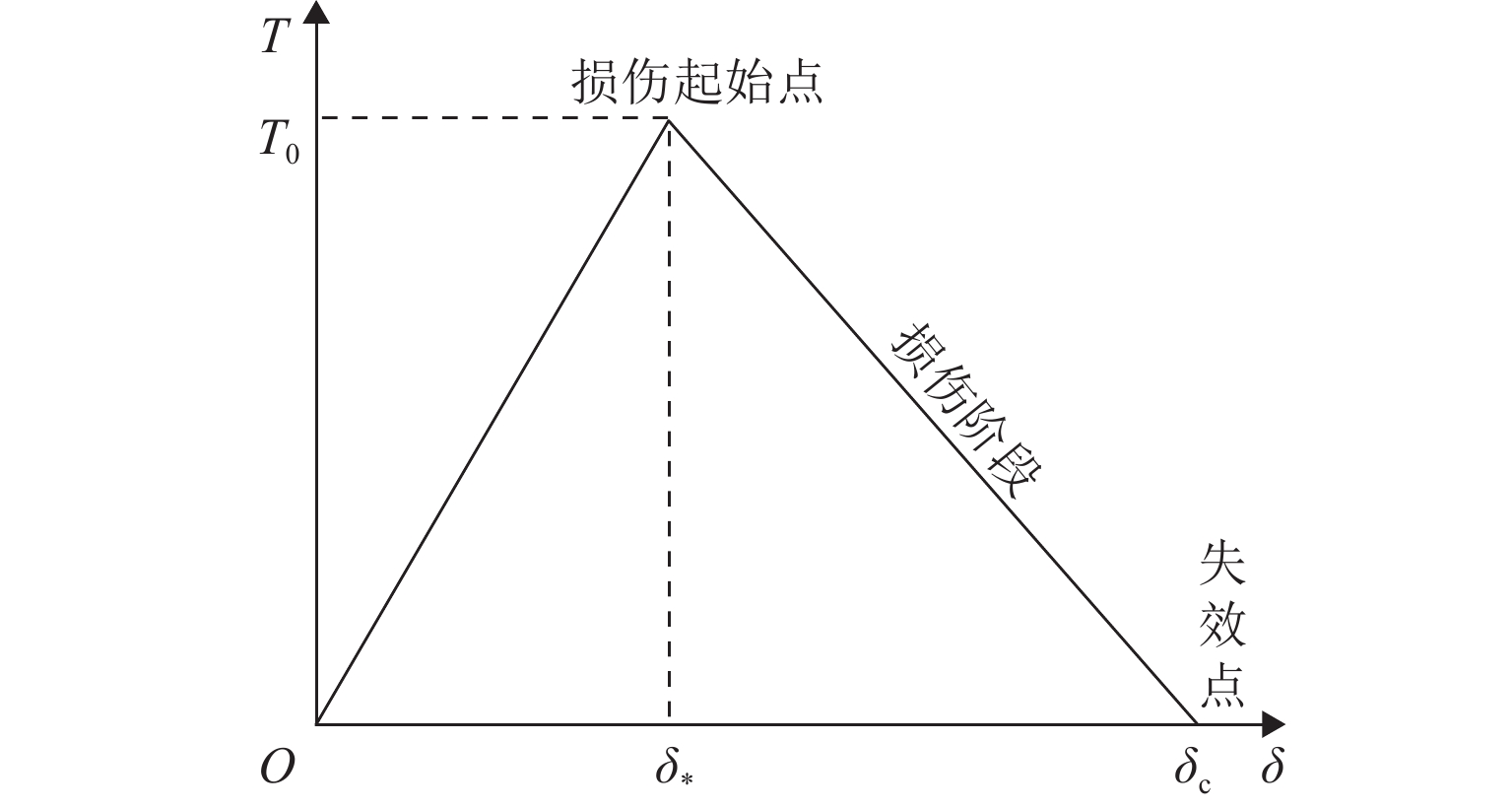
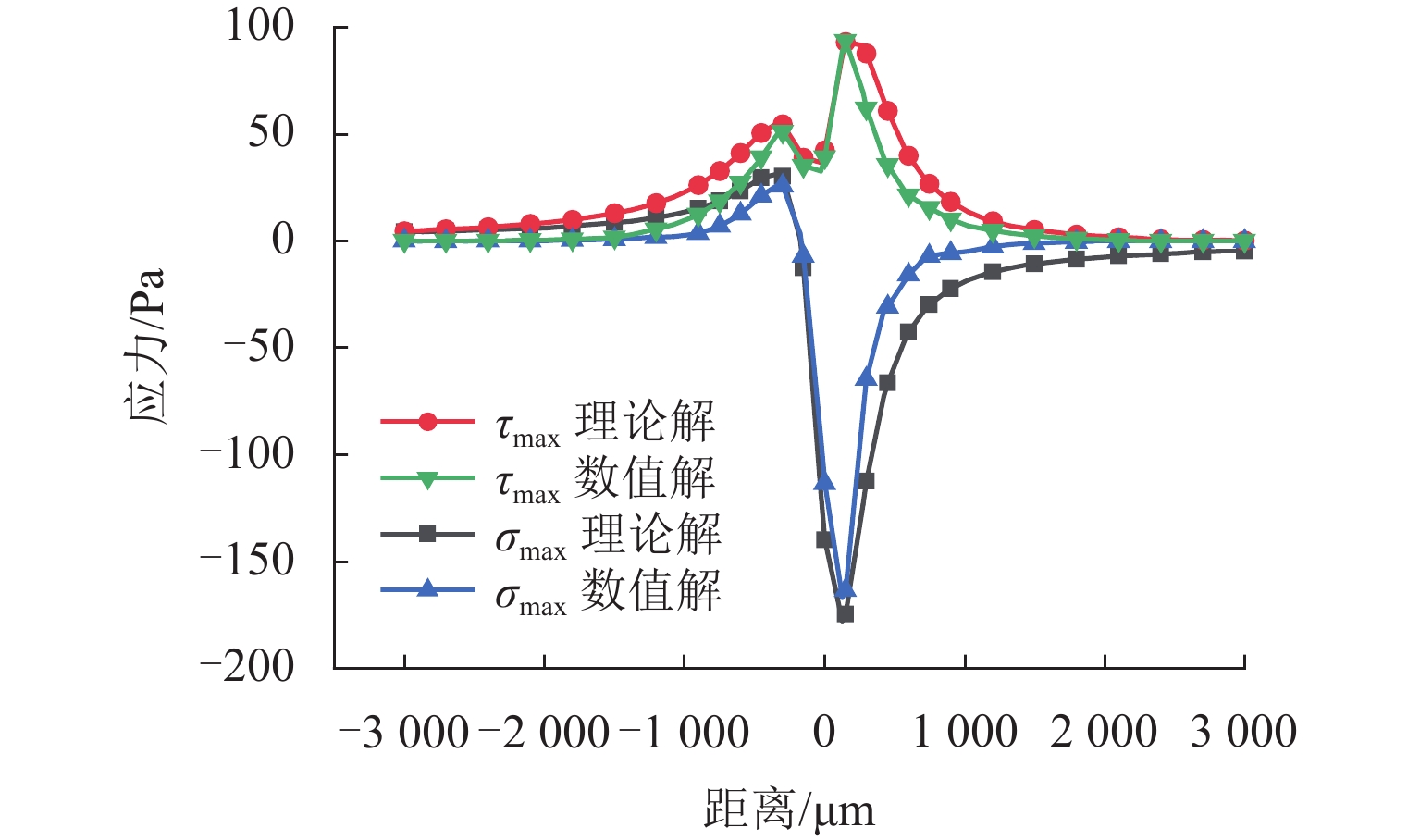

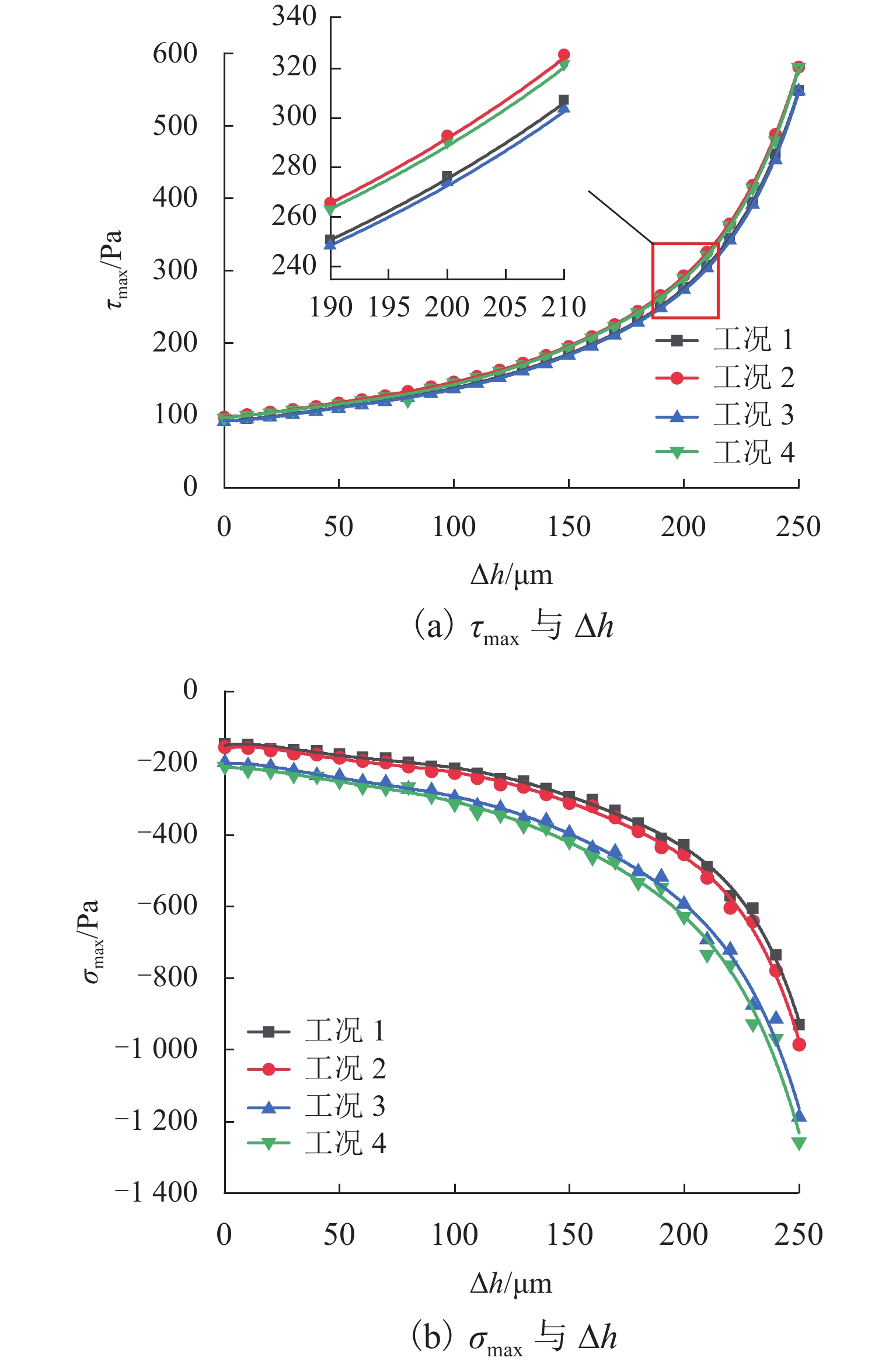
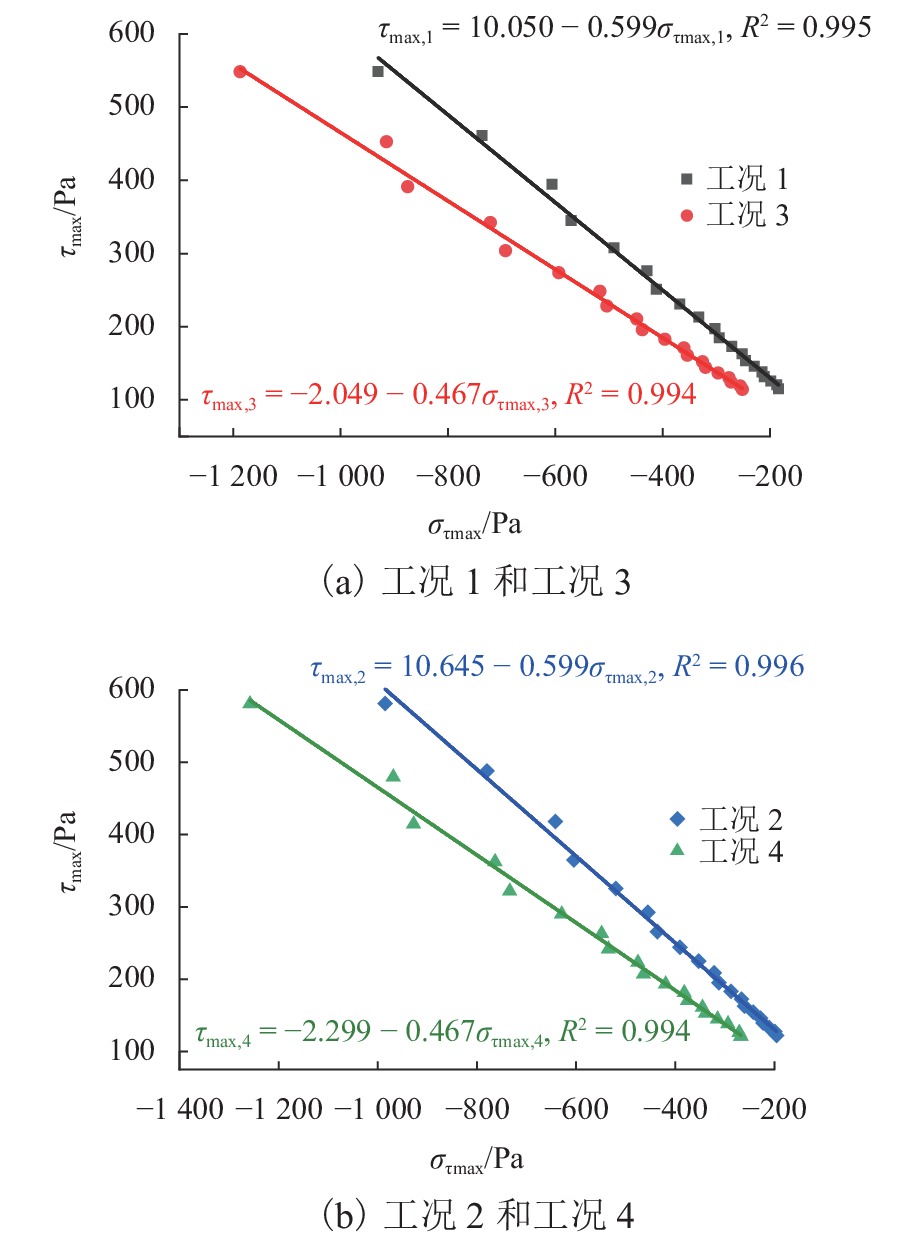
 百度学术
百度学术






